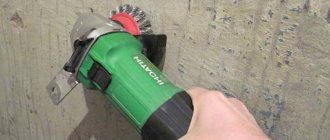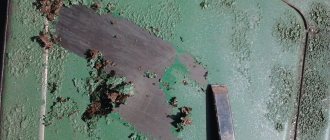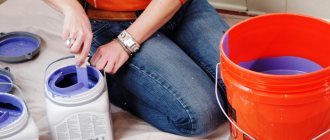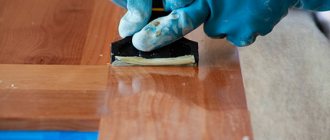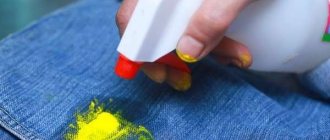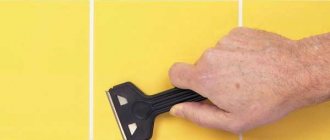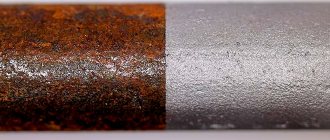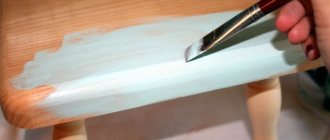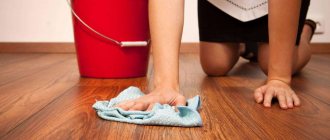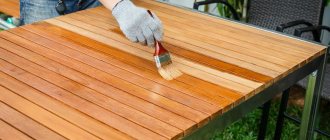Removing paint from a wooden surface without damaging it is not an easy task, but you can cope with it if you know some of the features of the work.
There are several methods to achieve your goal. Paint is removed mechanically, thermally and chemically, each of which has its own advantages and disadvantages.
You can learn how to remove old paint from wood at home from this article.
The need to remove old coating
How long the new coating will last depends on how well the old coating is removed. In some cases, it is possible not to remove the paint and varnish composition, but to apply a new top layer.
Mandatory wood surface treatment is required in the following situations:
- Irregularities. Occur if many layers have been applied to the product over time without removing the old paint;
- Defects in the form of cracks and chips. A new layer on such a base will not be able to lie smoothly and beautifully;
- Traces of wood cracking or swelling;
- The old layer has a warped texture or tight color that will stand out under the new, lighter tone.
Mandatory treatment of the wood surface is required for defects in the form of cracks and chips.
Types of washes
The specialized market is dominated by universal compositions - they are usually chosen by beginners who doubt the essence of the old coating that they have to get rid of. Specialized removers work more “targetedly”, allowing you to dissolve specific types of paintwork without residue.
Universal substances
They are relevant if the type of original coating is not known; they are also in demand due to their reasonable cost - this is a convenient solution for a limited budget. They cannot boast of high efficiency, since removing the old layer will require more effort and time. Solvents, which are invariably present in the composition, quickly evaporate, as a result of which the consumption of the chemical cocktail increases.
Universal liquid remover for wood
Specialized removers
The principle of operation of all variations is the same: substances actively interact with the coating, so the latter is destroyed. The compositions of paints can have fundamental differences, so it is advisable to use narrow-profile solvents that have a targeted effect. You can find mixtures that eliminate the following types of paints:
- alkyd,
- polyurethane,
- nitrocellulose;
- oil;
- epoxy;
- pentaphthalic.
All of them are effective and have a fast effect.
How to properly prepare for upcoming work
Removing paint from wood requires using various tools and materials. It is recommended to prepare them in advance. You may need a spatula. Instead, it is permissible to use a wire brush. For the thermal method, a hair dryer is required. The temperature of the device must be regulated. The list of useful tools also includes:
- Hammer. A drill will also work, the main thing is that there is a set of different attachments;
- Grinding machine or circular saw;
- A special liquid composition designed to remove paint from wood;
- Rags. The product is treated with it to remove the remaining paint and varnish composition;
- Skin and respiratory protection products. Gloves and a respirator will do. You can also use a respirator.
Removing paint from wood requires using various tools and materials.
Preparing tools
Prepare your tools in advance. To remove you will need:
- spatula or scraper;
- industrial hair dryer with temperature control;
- drill or drill with replaceable attachments;
- grinder or grinder;
- chemical remover;
- a rag to wipe off excess paint;
- respirator, gloves and safety glasses.
Mechanical restoration
When figuring out how to remove old paint from wooden surfaces, they often choose the simplest method. It comes down to mechanical removal of the paint layer. There are several ways to do this. First you should evaluate the structure of the material. If the wood is soft, then abrasive particles from tools will destroy the product.
When using any mechanical method, do not press hard on the tool. This will ruin the surface. Movements should be smooth.
When using any mechanical method, do not press hard on the tool.
Processing the product with sandpaper
Sandpaper allows you to quickly erase the old coating. But suitable for a thin layer. Repeated staining of sandpaper will not completely remove it. Also not suitable for difficult places on the product.
The technology for using sandpaper consists of the following steps:
- Prepare the sandpaper. You will need several sheets of different grain sizes.
- Begin by processing with coarse sandpaper. This will remove the top layer.
- Change the coarse grain to a finer one and use this sandpaper to clean the wood. The treatment is carried out until the surface becomes smooth.
To make the process easier, it is recommended to take a piece of timber and wrap it with sandpaper. It’s more convenient to work this way. The advantage of this method is the low probability of damage to the product and the availability of tools.
To make the process easier, it is recommended to take a piece of timber and wrap it with sandpaper.
Cleaning the product with an angle grinder (angle grinder)
The grinder cannot be turned on at full power when used in this case. It can damage the wood. To quickly get rid of the old paint layer, it is recommended to use a petal nozzle. The workflow is simple. You need to take a stable position, grasp the tool with both hands so that it does not slip out, and begin to process the surface. Paint particles quickly clog the discs of the machine. Therefore it is necessary to change them regularly. When the last layer of paint appears, it must be removed manually. To do this, use sandpaper. The resulting dust can be wiped off with a cloth previously moistened with water.
The grinder cannot be turned on at full power when used in this case.
Using a drill
The drill must be kept perpendicular to the wood when processing. The movements are not abrupt, smooth and accurate. Efforts need to be applied slowly and gradually. Paint particles may fly in different directions. Therefore, when choosing this method, be sure to use safety glasses. To avoid damaging the product, it is recommended to use special grinding attachments.
The drill must be kept perpendicular to the wood when processing.
Hard paint brushes
When using a hard brush, the product being treated must be taken outside. If this is not possible, all surrounding objects and surfaces are wrapped and covered with polyethylene.
This method consists of the following steps:
- An ax is used to make notches on the product. The wood is moistened with water and left for a couple of minutes so that the liquid is absorbed.
- The surface is treated with a metal brush, removing the top painted layer. To increase the effect of the process, it is recommended to hold the tool at an angle to the product.
- The bottom paint layer is removed with sandpaper.
This method is often used to process doors and window frames.
When using a hard brush, the product being treated must be taken outside.
When should paint be removed?
Conventional paint as a finishing material is familiar to everyone; it is perhaps the most popular type of finishing used to give a finished look to floors and other surfaces of any type. It not only allows you to decorate the walls or base of the apartment, but also protects the surface of the floorboards from excess moisture, exposure to sunlight, various parasites, etc.
Wood floor paint
But, like any other coating, the applied paint periodically needs to be updated. For example, when there is a renovation that does not involve removing the old floor covering, there is a need to repaint the floors or simply change the color of the floor so that it matches the design and interior of the room, the paint must be removed.
Also, removing paint from wooden floorboards is carried out in the following cases:
- deterioration of the general appearance of the floor;
- peeling paint;
- changes in coating color;
- stain formation;
- the need to level the floor;
- installation of tiles on a wooden base.
Wood floor repair
On a note! Many apartment owners, wanting to save time and money, apply a fresh coat of paint to the old one, but this is not recommended. One of the reasons is the formation of a layer that is too thick, which will prevent the doors from opening normally. Also, the new layer may lie unsightly, which will ruin the entire appearance of the floor.
It is not recommended to apply new paint over old paint
The most problematic thing is to remove the old paint that was used to paint the floors back in Soviet times. This is due to the fact that over the entire long period of operation of the floors, the pigment of the paint and varnish material has managed to penetrate deeply into the structure of the wooden base, which is why it will not be easy to remove such a layer of coating. But if you want, you can handle any paint layer.
You can remove any paint if you wish.
Thermal method for removing paint from wood
The method is considered universal. Heat treatment allows you to get rid of even old or cracked paint. If you need to process a large-sized product or with hard-to-reach places, you should choose this method.
To carry out the work, one of the following tools can be used:
- Gas-burner. The work is done outside. Can be used for the façade of a building, window frames and entrance doors. It is assumed that open fire will be used, which requires compliance with safety precautions. The burner is turned on and the surface begins to be processed until bubbles or streaks appear. The melted paint is removed with a scraper;
It is assumed that open fire will be used, which requires compliance with safety precautions. - Construction hairdryer. Can be used indoors. All you have to do is turn on the hairdryer and direct a stream of air onto the wood. The painted layer will begin to melt and bubbles will appear. The resulting drips are removed with a scraper. To make the process easier, it is necessary to regularly clean the tools from traces of paint. To remove paint from difficult areas, use a wire brush. The hairdryer acts more gently and gently on the wood. It doesn't burn her like a torch.
To make the process easier, it is necessary to regularly clean the tools from traces of paint.
Before using any of these tools, it is necessary to prepare the wood by brushing it with a stiff brush. Then the dust that appears is removed and the main stage of work begins.
When the process is completed, the surface is treated with fine-grained sandpaper to get rid of minor defects. Additionally, the surface is degreased. Alcohol or solvent will do.
Necessary equipment
The following devices are useful for mechanical cleaning:
- chisel, metal scrapers;
- abrasive paper of different grain sizes;
- metal brush;
- grinding machine with attachments.
Heat treatment will require devices that emit heat. A hair dryer is mainly used. This device allows you to regulate the temperature and increase it up to 600 degrees Celsius. A household analogue will not work, since it quickly overheats and is not able to produce a suitable temperature.
Chemical method
requires the presence of special solvents:
- industrial special tools for paint removal;
- household paint solvents.
As they say in the safety instructions: “Nothing pleases the eye like a second eye.” So don't forget about yourself. Working with electrical appliances, sharp, piercing objects, and chemicals can be harmful to health, even if you have a “virtuoso builder” certificate.
Don't forget about safety precautions:
- When working with sharp objects, protect your hands with gloves. Wear safety glasses. Hold the tool away from you. Do not put your fingers under the edge of the cutting object.
- If you use mechanisms with rotating parts, be sure to make sure that the laces and loose ends of clothing are hidden. Use goggles or special masks to protect your eyes.
- When working with a construction hair dryer, protect your eyes and respiratory organs from fumes of melted paint. Goggles and a respirator are required. Do not expose your hands to hot air to avoid burns.
- Chemical treatment must be carried out in full equipment: goggles, protective mask (respirator), rubber gloves.
Mechanical removal of paintwork materials
Please note that not all paint can be mechanically cleaned. For example, modern acrylic enamel easily beats any sandpaper. The effect depends on the area of the surface being processed, on the power of the tool and the abrasive used. If you need to “tear off” a small island of paint, you can clean it with sandpaper. In other cases, a more serious approach will be required.
Cleaning with a chisel and special scrapers
This method is suitable for hard wood. Cleaning paint in this way is similar to the sanding process, when a thin layer of wood is removed using a carpenter's tool. Here we remove a thin layer of wood along with the paintwork. This method is used on flat and shaped surfaces. To perform it you need to have sufficient physical strength.
How to perform the operation:
- The tool must be sharpened. This is the main key to success.
- The chisel should be held in the palm of your hand so that the tip protrudes from the underside of the fist by about 3 cm.
- Press the tool perpendicular to the wood.
- While pressing, make scraping movements in one direction. It is more convenient to make such movements towards yourself.
To clean the protrusions and grooves, use special sharpened curly scrapers.
Axe
This technique is good for surfaces with cracked or peeling paint. If you only have an ax at hand, sharpen it and get started. The technique differs from working with a chisel:
- The tip of the ax should be positioned to the surface at an angle of approximately 30 degrees.
- You need to hold the butt with one hand, and press on the canvas with the fingers of the other.
- Make gentle scraping movements away from you.
It may not be possible to remove all the paint this way, but it is possible to remove most of the coating.
Wire brush
This is the most aggressive method because the hard metal bristles scrape away the soft part of the wood. The result is an uneven surface.
But if you are satisfied with the future result, then just take a brush and clean the surface until all the paint comes off. We warn you that the work will require physical effort and time.
Cleaning with a grinder
The fastest, most effective and dustiest way. Although the latter is debatable. New tools are equipped with dust collectors. Thanks to this, work turns into pleasure.
Well, if you work the old fashioned way, get ready for dust to settle in the most unpredictable places. A great option is to work outdoors. This will allow you to avoid inhaling dust and save yourself from cleaning.
There are different attachments sold for angle grinders. The most effective are sanding wheels for removing paint. They are also called coral circles. Special abrasive material and large pores are designed to prevent the disc from clogging. Such attachments work much more effectively on thick paint coatings than conventional abrasive counterparts.
The price for such circles varies from 200 to 1100 rubles. The most popular manufacturers:
- M3;
- GTOOL GROUP;
- Russian master.
Instances from Aliexpress look like coral discs and even work, but not for long.
The abrasive material has varying degrees of hardness, which allows you to delicately process a wooden surface without significant damage. We recommend working with such nozzles at high speeds (4000 rpm).
At first glance, a budget option for an attachment is a simple abrasive wheel with Velcro with the coarsest grain size. To prevent the surface from clogging very intensively, the Grinder is set at low speeds. The rotations should be enough to maintain power to process the material, while the engine should not stall.
If you compare the efficiency and degree of wear of a conventional abrasive wheel and a coral attachment, you can come to the conclusion that a coral disc is more profitable to purchase. One abrasive attachment loses its properties after processing 1 m2, and wear of the coral analogue occurs after approximately 10 m2.
Thermal
Tormented by the issues of updating the faded beauty of wooden things, we are forcing manufacturers of consumer goods to move. And they often delight us with their decisions. For example, a construction hot air gun. This is a universal worker who solves dozens of problems where elevated temperatures are needed.
Synthetic paints tend to soften when exposed to heat. This feature is used to remove paintwork from wood. But it is important not to forget about the flammable properties of wood and not to set the heating temperature above 200 degrees.
Hot air gun with nozzle
Known methods are quite effective when performed correctly. Manufacturers of construction hair dryers now offer a special attachment for cleaning paint. It looks like a spatula that is put on the nozzle of a hair dryer.
How to do the job:
- Place the nozzle on the hair dryer.
- Set the heating level to 180-200 degrees Celsius.
- Turn on the device, press the spatula against the surface to be cleaned and slowly begin to scrape off the soft paint in one direction (away from you).
When working with a hairdryer, you do not need to make chaotic movements. Let the paint layer warm up evenly and remove it at the same time. Having gained a little experience, you will get used to performing this simple operation.
Construction hair dryer and spatula
If you own an old modification of a hot air gun, without special attachments, you will need additional equipment in the form of a spatula.
Method for cleaning wood from paint and varnish:
- Take a hairdryer in one hand and a spatula in the other.
- Press the spatula onto the surface to be cleaned at an angle of approximately 45 degrees.
- Bring the hair dryer to the spatula blade so that the nozzle points in the same direction as the edge of the spatula, and the air flow partially hits the metal and painted wood surface. Do not direct the air flow perpendicular to the canvas, as you may burn your fingers.
- After heating the paint, slowly begin to collect it with a spatula, moving in one direction. Sometimes it is more effective to make scraping movements. Paint coatings react differently to heat: some melt, while others come off in layers.
- Make movements away from you or to the side. To avoid burns, do not expose your fingers to the hot air stream.
Iron and towel
Another unconventional method that has been tested in practice is heating a coating of oil paint with an iron with a steam generator. This method is suitable for horizontal surfaces.
To work we need an iron, a towel and a spatula. We recommend working in the following sequence:
- Cover the area to be cleaned with a terry towel.
- Turn the iron into steam generator mode or use a special button that produces hot steam.
- Iron the surface of the towel for 30 seconds.
- Place the iron on the edge of the towel for a few seconds and heat the area of paint. Move the iron to the next area of paint, at the same time peel back the fabric and clean off the softened coating.
- So, warm the surface in small segments and remove all the paint.
Chemical method for removing paint from wood
In this case, special removers or softeners are used. There are different compositions, which need to be selected based on the type of paint. Then the mixture will not damage the surface of the product.
Before using the selected composition, be sure to open doors and windows, ensuring sufficient ventilation in the room. All surfaces and products are covered with polyethylene so as not to get dirty. The softener or remover is poured into a separate container. The composition is applied to the surface with a roller or brush, depending on the consistency of the mixture. Leave the wash on for a while. On average, 20-30 minutes are enough for the paint to dissolve. Using a scraper, remove the remaining paint composition. In difficult situations, the remover can be reapplied.
To get the maximum effect from the procedure, you should choose the softener wisely:
- The gel consistency allows you to get the desired result faster than liquid, but this product is more expensive;
- If there is poor ventilation in the room where the work is being carried out, then choose products with a less aggressive composition;
- Cheap domestic solvents are not suitable for several layers of oil paint. They will not be able to cope with it and are suitable for simpler work.
Some washes cause darkening of the surface, which must be taken into account before starting work. In addition to the wash, you can use caustic soda. It must be mixed with water and stirred to the consistency of sour cream. Add a little oatmeal, pre-chopped. The resulting composition is applied to the surface and left until the paint layer swells. Then everything is cleaned off with a spatula.
On average, 20-30 minutes are enough for the paint to dissolve.
Chemical cleaning
The method involves the use of various reagents, which are sold in any specialized store. To remove a thin layer of paint, ordinary acetone is sufficient. For thicker ones, it is powerless, and you should purchase a stronger solvent. If a person is not sure about the composition of the drug, then it makes sense to ask for advice from a store consultant.
If paint removal is carried out indoors, then all windows should be opened before treating the surface with chemicals.
Detailed instructions:
- It is necessary to cover all objects that may come into contact with the solvent.
- Pour the solution into a paint container.
- Soak the brush in the wash and gently squeeze out.
- Apply the reagent to the surface and wait about 30 minutes (the exact time should be indicated in the instructions for the solvent).
- Clean the product by scraping off the softened layer of paint.
The procedure is repeated until no traces of the dye remain. If it is impossible to ensure the supply of fresh air to the workroom, reagents with the least aggressive composition should be purchased. The method cannot be called the most effective, since solvents can remove paint from wood up to six months old.
Which option should you prefer?
To choose the most suitable method, it is necessary to take into account the characteristics of the product and the desired result. If high-quality and complete processing is required, several methods can be combined. They start with professional formulations, and the final cleaning is carried out manually. Handy tools like sandpaper help save money.
If high-quality and complete processing is required, several methods can be combined.
Features of polyacrylate-based paint
[turbobutton]
Using acrylic paint, the desired color is given to various materials:
- plastic;
- tree;
- concrete;
- fabrics;
- brick;
- glass.
This multifunctional coating is used for exterior and interior finishing work. With their use, original suspended ceilings are obtained; acrylic is used for painting nails, covering small models and figurines. There are no restrictions when choosing paint color. The diversity of the palette will captivate every buyer. Its advantage over other types of paint can be considered the fact that acrylic does not flow after application to vertical surfaces. It fits perfectly, does not form unevenness or streaks.
A rich palette of acrylic paints is perfect for children's creativity.
Note: Acrylic is safe for people. It is used when painting children's rooms. A strong advantage is the ability of acrylic to allow air to pass through and resist moisture. Surfaces coated with acrylic paint are not susceptible to mold and fungi.
The differences from oil paint are the following:
- quick drying;
- no odor;
- no cracking.
Due to the advantages listed above, most users prefer acrylic paint for renovations in residential, office or industrial premises.
Acrylic has a significant feature, which is represented by its unique composition. The following components are included in acrylic paint:
- acrylic acid;
- water;
- dye;
- film former
Difficulties in washing stains are explained by the presence of a film that promotes accelerated hardening of this type of paint.
Features for different types of dyes
When processing, it is also necessary to take into account the composition of the paint layer. The type of paint determines how effective the chosen method will be on it. For an oil base, a mechanical method with a grinder or spatula is suitable. It is recommended to remove water-based emulsion with solvents.
The acrylic layer is removed chemically or mechanically. Powder paint can be removed using a strong jet of water. It is recommended to wash several layers of any paint composition by heat treatment.
The acrylic layer is removed chemically or mechanically.
How to remove hardened acrylic from tiles?
Basic methods for removing liquid acrylic
- mechanical removal - you can use a knife, spatula, small screwdriver or sandpaper. ...
- warm water, if you need to remove frozen paint on the edge;
- chemical solvent - this product can be found in a hardware store or at a point with radio components.
Mar 20
2022 Interesting materials:
How to clean a black drape coat? How to clean cast iron cookware? How to clean a cast iron frying pan at home? How to clean a cast iron frying pan? How to clean the outside of a cast iron frying pan? How to clean a cast iron duck pot? How to clean metal money? How to clean the speaker on iPhone SE? How to clean a sofa without streaks? How to clean a sofa with home remedies?
The most common mistakes
Many people make mistakes when processing a product that affect the efficiency and quality of the process. To prevent this from happening, you need to figure out what not to do during your work.
The most common mistakes include:
- Coating the entire area of the product with a chemical composition at once. First, you should apply the product to a small area;
- Using brushes that are too rough for cleaning. Hard abrasive particles will damage and destroy the wood;
- Leaving the composition on the surface for a long time. It is allowed to keep the mixture for a maximum of 2 hours, otherwise the structure of the product will be destroyed;
- Careless handling of tools during the thermal method. Overheating of the surface increases the fire hazard;
- Pouring the wash into a plastic container. The aggressive composition of the special product will damage the container.
Overheating the surface increases the fire hazard.
How to remove old paint
In addition to the products described above, special chemical removers are often used, which contain formic acid, dimethyl chloride, and other organic substances. Such reagents differ in the rate of decomposition process, and therefore they can be considered almost harmless.
Chemical wash works well with water-based paint - if the product is covered with one or two layers, it will be easy to wash off with store-bought reagents. There are several ways to remove paint coating using products that you can even make yourself. The water-based emulsion can be easily and simply removed using wallpaper glue or paste. The entire surface of the product should be coated with adhesive and newspaper should be glued. After drying, remove the paper with a spatula, and along with it, the layer of paint will come off the wood.
Using mechanical methods of removing paint, you can do everything quickly, and you should give preference to a drill with a special attachment, which can be used as a brush with metal bristles, which does an excellent job of processing a multi-layer water-based coating, because it cannot be removed with a spatula. The only drawback of this method will be a lot of dust formation in the apartment, which means that when carrying out such work in the kitchen, you need to cover all the furniture with film.
Important Tips
When using the mechanical method, do not press hard on the wood so as not to damage it. It is recommended to use personal protective equipment, including gloves and a respirator. Protect surrounding objects and surfaces with polyethylene.
It is not recommended to heat the wall where wiring runs or electrical appliances are connected. After using any of the selected methods, the surface is treated with clean water.
It is not recommended to heat the wall where wiring runs or electrical appliances are connected.
Removing paint from wood can be difficult. But if you take into account the nature of the paint composition and the surface features, you will be able to choose a suitable and effective method. If necessary, you can repeat the removal procedure several times to achieve the most desired result.
What can be processed?
See below for which products can be subjected to the paint removal procedure:
- internal and external wooden fittings;
- exterior and interior doors and door frames;
- wooden stair railings;
- window frames and window sills;
- wooden floor boards;
- parquet;
- wooden baseboards.
Main disadvantages
Like any other device for carrying out repair and finishing work, this attachment has disadvantages. First of all, this is rapid wear.
When grinding rough surfaces, friction occurs and the paint stripper is deformed. Over time, the teeth fly off, reducing the effectiveness of processing. The average life of the nozzle is enough to remove paint in 1-2 rooms.
In contrast to this disadvantage, it is worth noting the low price of the paint remover, which is lower than that of modern power tools and solvents. This allows you to stock up on several attachments for repairs throughout the entire apartment.
Alternative solution
The idea of creating a paint remover came to its inventor while searching for ways to quickly and safely clean surfaces from the old finishing layer. Before the advent of this attachment, repairmen had to resort to a number of methods, most of which were ineffective:
- A spatula is the cheapest, but ineffective tool.
- An ax - its edge helps to pry up the paint layer, but if the coating fits tightly to the wall, then you can only damage it (in addition, there is a possibility of electrical wiring breaking).
- A metal brush for a drill - it is more effective than an axe, but it does not cut off the paint, but turns it into dust.
- Hot air gun - this construction tool is used to heat the old paint layer, which is subsequently removed with a spatula, however, when polymers decompose, toxic substances are released into the air, which can cause great harm to health.
- Power tools - here we assume grinders and an angle grinder with a special disk, but their acquisition is associated with high costs.
The “Paint Remover” nozzle has a number of advantages over the indicated devices, due to which it has become in great demand in Russia, Ukraine and other CIS countries.
Sanding walls
The paint remover processes not only the polymer layer, but also the remains of tile and wallpaper adhesive. It is also suitable for removing minor concrete stains and plaster residues on walls, which helps prepare the surface for subsequent procedures.
This attachment is a patented device, which confirms its effectiveness and practicality. It is equally suitable for treating walls, floors and other surfaces, making it an indispensable assistant in repairs.
Which drill is suitable for this attachment?
The paint remover is simple and practical: it is compatible with most models of modern power tools (Russian and foreign). To make processing of old surfaces more effective, it is recommended to use drills:
- with reverse, which will help adapt to different conditions;
- designed for long-term operation, including in vibration mode;
- having a stepped or smooth speed controller.
Such a power tool will help you process walls much faster and easier, without spending much effort.
Key Benefits
The paint remover does not crush the old layer into dust, but carefully removes it in large fragments. This speeds up the work significantly, and in just an hour you can clean from 1 to 4 square meters of surface. This method greatly simplifies cleaning after dismantling the old coating (there is no need to carefully collect dust with a wet cloth or vacuum cleaner).
An important advantage of the “Paint Remover” nozzle is the ability to process almost any surface in multi-story buildings. Initially, the tool was created for removing paint from concrete, but practice has shown that it is also effective when sanding other materials:
- bricks;
- cinder block;
- wood;
- metal;
- sandstone
This attachment can be used to remove the old layer of varnish from floorboards for the purpose of their subsequent restoration, as well as remove paint from walls and floor coverings without any difficulty.
Security for communications
The paint remover carefully removes the polymer layer and does not create a risk of damage to power and low-current cable systems. Its environmental friendliness also plays an important role. The absence of heat treatment does not lead to the decomposition of polymers and the appearance of toxic emissions.
This attachment is also effective in cases where it is necessary to remove old paint in houses built back in the 60s of the last century. Soviet paint is one of the most toxic (contains a large mass fraction of lead), so it must be removed carefully, using a special tool. You can't wash it into dust.
